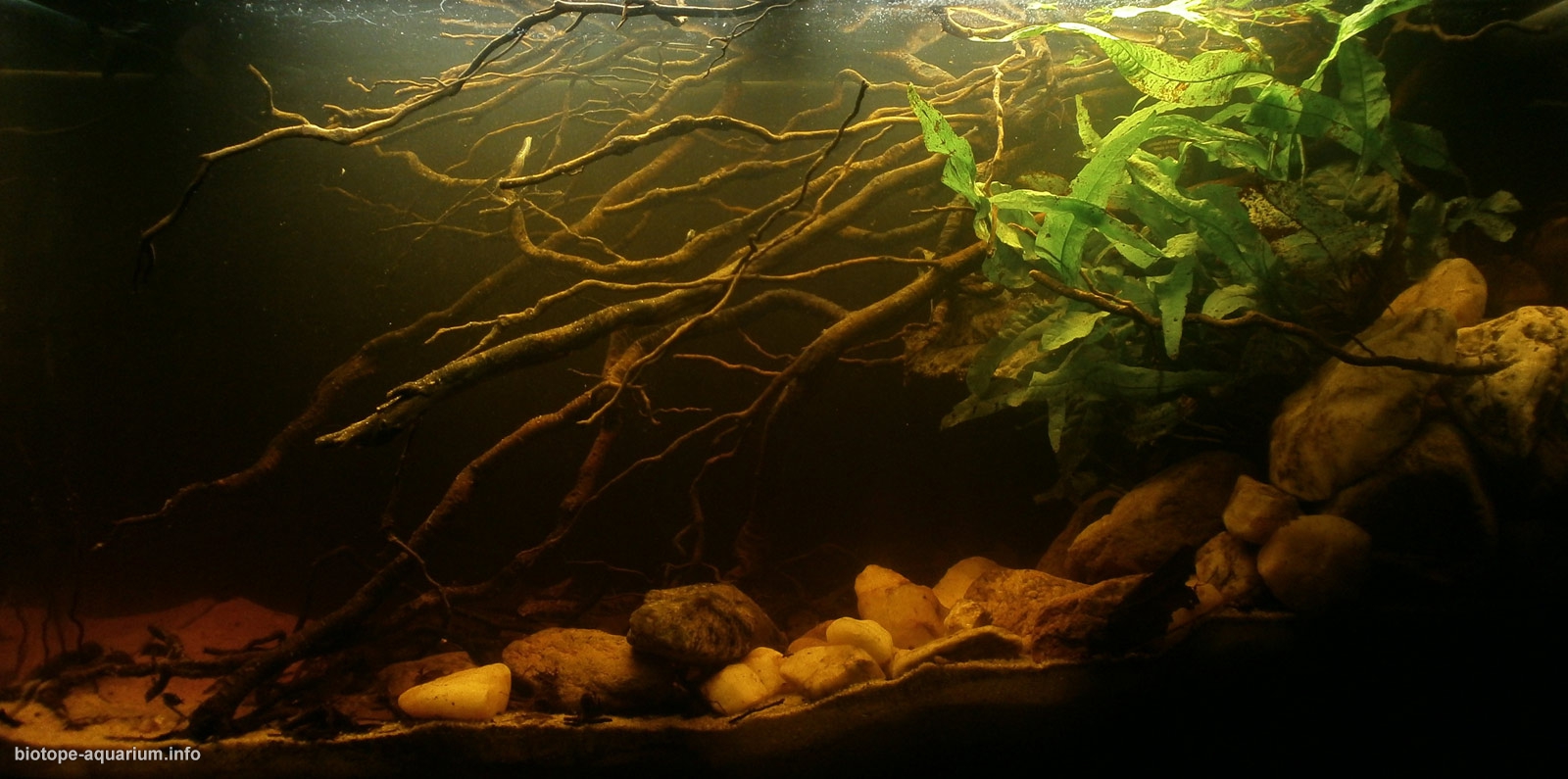Mekong Basin of Laos
The 36th place in the qualifying stage of the Biotope Aquarium Design Contest 2015
![]() Greece. Vasilis Athanasopoulos-Feredinos
Greece. Vasilis Athanasopoulos-Feredinos

Volume: 125 L
List of fishes: Tetraodon suvattii
List of plants: Microsorum pteropus
Biotope description: The aquarium was set up based on a biotope of Mekong basin in southeast Laos. Mekong River is the longest river in Southeast Asia, the 7th longest in Asia, and the 12th longest in the world. It has a length of about 4,350 km. Rising in southeastern Qinghai province, China, it flows through the eastern part of the Tibet Autonomous Region and Yunnan province, after which it forms part of the border between Myanmar and Laos, as well as between Laos and Thailand. The river then flows through Laos, Cambodia, and Vietnam before draining into the South China Sea south of Ho Chi Minh City (formerly Saigon). Vientiane (Viangchan), the capital of Laos, and Phnom Penh, the capital of Cambodia, both stand on its banks. About three-fourths of the drainage area of the Mekong lies within the four countries the river traverses on its lower course: Laos, Thailand, Cambodia, and Vietnam. The river basin may be divided into six major sections on the basis of landforms, vegetation, and soils: the northern highlands, Khorat Plateau, eastern highlands, southern lowlands, southern highlands, and delta. Most of the vegetation in the lower basin is of the tropical broad-leaved variety, although the occurrence of individual species varies with latitude and topography. For much of its length the Mekong flows through bedrock channels, i.e. channels that are confined or constrained by bedrock or old alluvium in the bed and riverbanks. Geomorphologic features normally associated with the alluvial stretches of mature rivers, such as meanders, oxbow lakes, cut-offs, and extensive floodplains are restricted to a short stretch of the mainstream around Vientiane and downstream of Kratie where the river develops alluvial channels that are free of control exerted by the underlying bedrock. The commercially valuable fish species in the Mekong are generally divided between “black fish”, which inhabit low oxygen, slow moving, shallow waters, and “white fish”, which inhabit well oxygenated, fast moving, deeper waters. Other aquatic animals such as freshwater crabs, shrimps, snakes, turtles, and frogs. The Mekong has no fewer than 20,000 species of plants, 1,200 bird species, 800 species of reptiles and amphibians, and 430 mammal species. Over 1300 new species have been catalogued since 1997.
